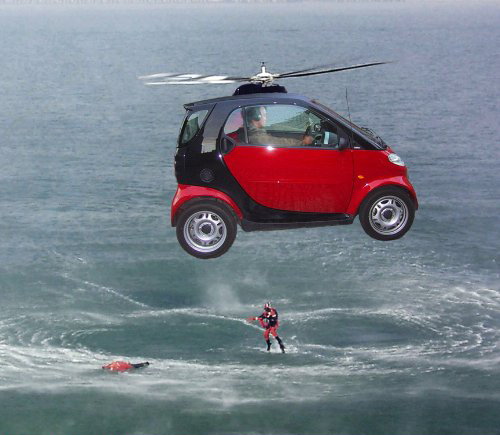It's Time to do Something about the Lack of Flying Cars
It's 2011 and I still don't have a flying car parked outside my house. That really bothers me.
Humans first ascended into the air in 1783 when Etienne, one of the famous Montgolfier brothers, climbed into a hot air balloon and set off. Doesn't take Stephen Hawking to figure out that was over 200 years ago.
Continuing the 'brothers' theme, the first powered flight took to the air over Kitty Hawk, North Carolina, on December 17th 1903 when Orville Wright took off on board the Wright Flyer with his sibling, Wilbur, running alongside him. That was almost 110 years ago!!
It's been over 40 years since Concorde was designed and built, a craft transporting people (admittedly, quite rich ones) across the Atlantic in about 3 hours between London and New York at twice the speed of sound.
All this has gone on and we (Joe Public) are still travelling around in only two dimensions, at hurrendously slow speeds, getting trapped in awful congestion, and generally shortening our already-brief lives by letting our blood boil in traffic jams.
It is 2011!!!
Here's some out-loud thinking...:
The Recipe
Like my Recipe for an Urban Vehicle, I think it's necessary to reduce the requirements of a flying personal vehicle. Something to define the path to the goal.
- Must be able to take off with a very-short takeoff run, or vertically
- Should use gas turbines for power due to their power/weight/economy ratios
- Should be incredibly lightweight to minimise fuel consumption. This suggests the use of carbon fibre, magnesium alloys and aluminium.
- It must be fail safe at all altitudes.
- It should, from the outset, be designed to operate autonomously. Controls should be present to allow the pilot to take charge in exceptional circumstances.
- It should be fitted with aerodynamic devices to allow continued flight even in an unpowered situation.
- Fuel should be supplied to the engine in such a way that it is gravity fed if a pump becomes inoperative. However, a secure way of cutting fuel to the engine should be present to starve engine fires should they occur.
- The vehicle should be quiet, so that it can be operated from a densely populated area at all hours. This would require the use of techniques such as chevron nozzles and very high bypass ratio turbines.
- The vehicle should be capable of extended flight times. This is necessary to make it a commercial success.
- In order to alleviate the boredom of long-distance autonomous flight regimes, a high calibre of entertainment and connectivity facilities should be present.
Commercial Success
As mentioned above, it is essential that such a machine is commercially successful. This allows the concept to be developed and improved.
If you want to get involved, or invest, let me know. Expertise in lightweight airframes and turboshaft engines (yes, turboshaft!) are highly preferable.
I've already approached Audi and Robinson Helicopters!
I'm still waiting for a response... :)

Comments...